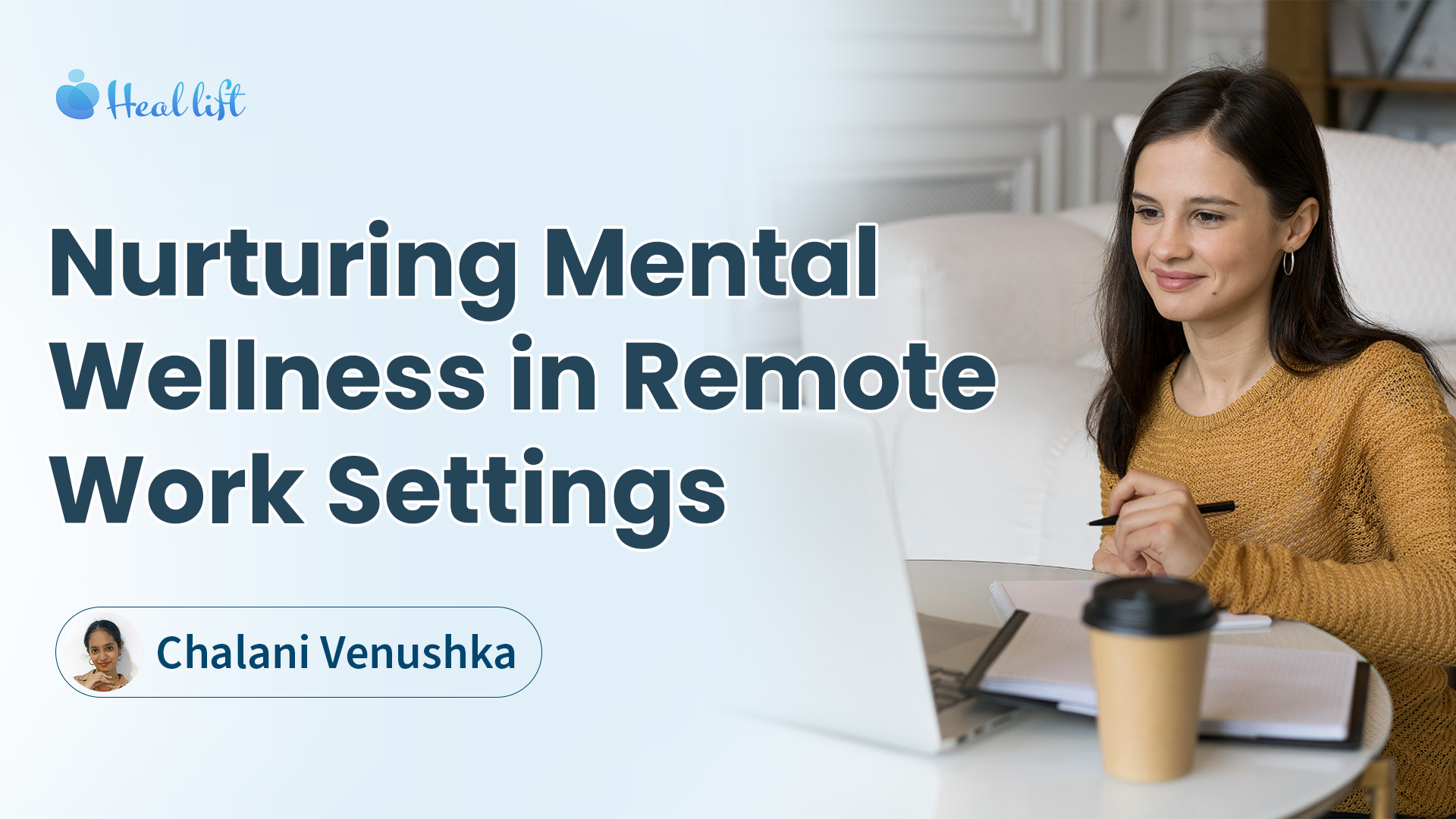Sandumini Nimashi - 29 Jun 2024
Men Don't Talk? : Addressing Men's Mental Health
The enduring stereotype that "men don't talk" reinforces a stoic ideal that encourages them to grapple with stress, anxiety, and depression alone.

Heal Lift

In today's ever-changing work landscape, remote employment has become increasingly prevalent. While the flexibility and convenience it offers are undeniable, there are significant challenges for mental health that come with this territory. Let's delve into these challenges and explore practical strategies for maintaining mental well-being while working remotely.
Feeling of Isolation
One of the foremost challenges remote workers face is the feeling of isolation. Despite being digitally connected, the absence of in-person interactions can lead to loneliness and a sense of disconnection. Without the camaraderie of office banter or impromptu meetings, remote workers may struggle to feel part of a team. This isolation can also contribute to feelings of self-doubt and imposter syndrome.
To address this, it's crucial to cultivate a sense of community within remote teams. Simple initiatives like virtual coffee breaks, team-building activities, or designated channels for non-work-related conversations can help bridge the gap and foster a sense of belonging. Regular video calls or meetings can also provide opportunities for face-to-face interaction, strengthening bonds and reducing feelings of isolation.
Maintaining a Healthy Work-life Balance
Another significant challenge is maintaining a healthy work-life balance. With the office just a few steps away, remote workers often find themselves working longer hours and struggling to switch off from work. This blurring of boundaries can lead to burnout and increased stress levels. To combat this, it's essential to establish clear boundaries between work and personal life.
Setting specific work hours and creating a dedicated workspace can help delineate these boundaries. Establishing a routine that includes regular breaks and leisure activities can also prevent overwork and promote relaxation. Communicating these boundaries to colleagues and managers is equally important to ensure mutual respect and understanding.
Adverse Effects on Physical and Mental Health
Additionally, the sedentary nature of remote work can have adverse effects on both physical and mental health. Prolonged periods of sitting can lead to stiffness, fatigue, and decreased motivation. Incorporating physical activity into the daily routine is crucial for maintaining overall well-being. Simple strategies like taking short walks, stretching exercises, or even desk yoga can help counteract the negative effects of prolonged sitting. Not only does physical activity improve physical health, but it also boosts mood and energy levels, reducing feelings of lethargy and improving mental clarity.
Overwhelming Connectivity by Technology
Furthermore, the constant connectivity facilitated by technology can be overwhelming. The incessant barrage of emails, messages, and notifications can lead to feelings of stress and anxiety. To mitigate this, it's essential to establish boundaries around technology use and prioritize periods of disconnection. Designating specific times to check emails and messages can prevent constant interruptions and allow for focused work. Implementing digital detox periods, where devices are switched off or put on silent, can provide much-needed respite from the digital noise and allow for mental recharge.
In conclusion, while remote work offers numerous benefits, it also presents unique challenges for mental health. By prioritizing connection, establishing boundaries, incorporating physical activity, and managing technology use, remote workers can maintain their mental well-being and thrive in a remote work environment. It's essential for individuals and organizations alike to recognize the importance of mental health in remote work settings and implement strategies to support it effectively. By doing so, we can create healthier, more sustainable remote work environments for everyone involved.
